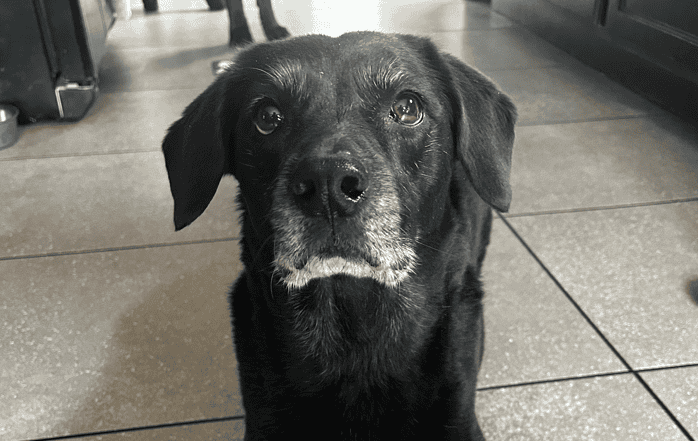There’s a well-worn saying that you may be familiar with – “you can’t teach an old dog new tricks”. Like many of those well-worn sayings, this one isn’t grounded in truth.
Now, there are obviously limitations when it comes to training an older dog, and you should set your expectations accordingly. You’re not going to see a senior dog fly through an agility course or become one of the quickest in the nation at Fast CAT. However, that doesn’t mean that you should just give up on the idea of teaching your older dog some new skills. In fact, there are several compelling reasons why taking the time to work with dogs “of a certain vintage” is worthwhile.
Why it is important to train an older dog
As you might expect, as your dog gets older, they will start to decline physically and cognitively. But just as we would encourage our parents and grandparents to remain mentally and physically active as they approach their later years, we can see many of the same benefits in adopting the same approach when it comes to older dogs.
For example, as time has progressed, your dog may have acquired certain undesirable behavioral habits. These tendencies may not be dangerous, but they can be frustrating or disruptive. They may even restrict your older dog from living the calm, peaceful and tranquil life they have earned from spending many years as a faithful companion. It’s never too late to try and manage any behavioral quirks that can alleviate the frustration for you and your dog.
Aside from behavioral improvement, there are other valuable reasons to train a senior dog. Physical activity is key to maintaining overall health and wellbeing – even just a gentle walk each day can help to maintain joint and bone health. Most forms of dog training will involve physical movement. Additionally, engaging your dog in training activities can help to reduce or slow the potential effects of conditions like canine dementia.
Tips for training an older dog
The philosophy for training an older dog is very different from the one we might implement with a young puppy. In the first few months of life, puppies soak up new information like a sponge; with a senior dog, you’re working with an animal who has experienced years of unintentionally reinforced habits and learned behaviors. The tips below can help you as you think about the best way to train your older dog.
1) Know your dog
If you own a senior dog, the chances are that they have been an integral part of your family for several years. Their behavior, temperament and physical condition is likely to be second nature to you. Make sure to bear these details in mind when it comes to thinking about their training. If your dog has always been somewhat stubborn when it comes to learning new behaviors, then you already know that you will need to adopt a very patient approach to teaching. You may already be aware of certain behavioral issues that you would like to address, because they may have been prevalent for a number of years.
Additionally, take your dog’s physical characteristics into account when building a training plan. If your dog struggles with hip movement, asking them to repeatedly move into (and out of) a Sit or Down position could put undue pressure on already creaking joints. Nobody knows your dog better than you, particularly after all these years together.
2) Formulate training goals
Teaching is successful when the teacher has clear goals they are looking to achieve with their student. Take some time to consider realistic training goals with your older dog, particularly considering their age, physical condition and cognitive abilities. Asking dogs who are already suffering cognitively to learn complex obedience routines may be setting all parties up for failure (although, as a counterpoint, demanding sequences that promote thought and focus can help to prevent the onset of conditions like dementia). Engaging an older dog in a physically demanding activity, such as expecting your senior dog to become a trained Search and Rescue K9 who can effortlessly cover acres of dense woodland, is also unlikely to be successful. Be clear and concise with your training goals, and make sure they are realistic.
3) Build a training routine
This is good advice for any type of dog training with any type of dog – build a routine and stick to it. You probably don’t need to spend three hours every day working with your older dog, and it would actually be more effective to spend shorter, more frequent sessions with them. Your dog’s training routine also has to work around your schedule. If you know you will be out at work for the entirety of the day, your schedule will probably dictate that you’ll be getting a short session first thing in the morning or just before dinner. Ensuring everyone in the household is on the same page with your dog’s training regimen can help to hold everyone accountable, and most importantly, ensure that your dog’s training remains consistent.
4) Additional training ideas for older dogs
Perhaps your older dog already knows their basic obedience commands, and you’re looking for a fun activity for them to take part in – or maybe you just want to get your dog involved in a new sport but don’t know where to turn. No matter the circumstances, there are plenty of additional training ideas that your senior dog can take part in to provide them with the enrichment they require. Examples include:
- Scent work. This low-intensity activity encourages your dog to use their nose to locate essential oils.
- Trick training. Your dog could learn a multitude of new tricks, from high-fives to elaborate spins.
- Advanced obedience. You can work on building on your dog’s existing skills, from furthering the distance and duration of their recall, to improving their heel at your side.
- AKC Canine Good Citizen award. Training your older dog for the AKC Canine Good Citizen (CGC) award gives you a tangible goal (and official title) to work towards.
- Balance skills. Your older dog can be trained to walk over wobbleboards or even across cushions to help work on their balance and stability.
In conclusion
We are firm believers that dog training should be fun – and that is especially the case when it comes to training older dogs! With a calm, patient and positive approach, there’s no doubt about it – you can teach an old dog new tricks.
If you’re looking for inspiration, ideas or guidance for training your older dog, we’d love to hear from you! Our training programs are available in-person in central North Carolina, with virtual programs also available – wherever you and your dog are located in the world. Our one-off virtual consulting sessions can also be a great way to get advice without needing to commit to a full training program. Reach out to us today with any questions!

